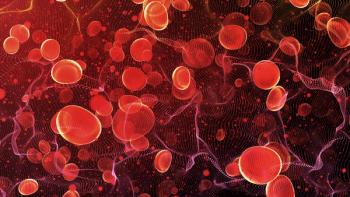
3 Biggest Statin Myths Debunked
In light of misrepresented statistics and overstated fears about statin-related adverse events, here are 3 of the biggest myths your patients may have heard about these life-saving medications-and the facts
Questioning the efficacy of statins has become fashionable, even though they rank among the most effective medications.
In light of misrepresented statistics and overstated fears about statin-related adverse events, here are 3 of the biggest myths your patients may have heard about these life-saving medications—and the facts.
1. Statins cause type 2 diabetes.
Fact: the risk of developing type 2 diabetes mellitus (T2DM) with statin therapy is small, resulting in 1 additional case of T2DM for every 255 patients receiving statins for 4 years.1
2. Statins hardly prevent any cardiovascular events. You would have to treat at least 100 patients with statins to prevent 1 heart attack.
Facts:
- An important factor consider when looking at a number needed to treat is the time period over which the study was conducted.
- The case of “100 patients needed to treat” comes from the Anglo-Scandinavian Cardiac Outcomes Trial (ASCOT), a single large study that was conducted over just over 3 years—hardly enough time for a cardiovascular benefit to accrue. The fact that any benefit was detected at all in the ASCOT study shows that statins have important benefits.2
- In older, longer-term trials with niacin (which also reduces low-density lipoprotein cholesterol, but to a lower degree than most statins)3: From 1966 through 1975, 8341 men aged 30 to 64 years in the Coronary Drug Project study who had experienced a prior myocardial infarction received clofibrate, niacin, or placebo. After 9 years of follow-up, niacin reduced mortality rates by 11% versus the placebo arm (52% versus 58.2%; P = .0004). In other words, niacin prevented 1 death of every 16 patients receiving treatment over 9 years.
- ​In older, longer-term trials with the bile-acid sequestrant cholestyramine (which also reduces low-density lipoprotein cholesterol, but to a lower degree than most statins)4: 3806 middle-aged men received cholestyramine or placebo over an average of 7.4 years. The absolute reduction in all-cause mortality was 7 percentage points, which corresponds to a number needed to treat of 14. In other words, cholestyramine prevented 1 death of every 14 people receiving treatment over 7 years.
- ​Modern metaanalyses show the following benefits of statins using relative risk, a time-independent statistic: As primary therapy, statins5: Reduce all-cause mortality rates by 17% (RR 0.83, 95% CI 0.73 to 0.95). Reduce a combined end point of fatal and nonfatal cardiovascular disease by 30% (RR 0.70, 95% CI 0.61 to 0.79). Reduce the risk of requiring revascularization by 34% (RR 0.66, 95% CI 0.53 to 0.83). Among patients with cardiovascular risk factors, and those receiving statins as secondary therapy after a cardiac or cerebrovascular event, statins reduce6: All-cause mortality by 12% (OR: 0.88, 95% CI: 0.81 to 0.96). Major coronary events by 30% (OR: 0.70, 95% CI: 0.61 to 0.81). Major cerebrovascular events by 19% (OR: 0.81, 0.71 to 0.93).
- In short, statins have real benefits and should be used whenever possible, except in rare cases when true statin-related adverse events occur.
3. Unless you can receive a high dose of a statin, it is not worth taking.
Facts:
- More than 80% of the benefits of statins occur at the lowest dose.7
- However, it is true that more-intensive statin therapy regimens provide a greater benefit than less-intensive statin therapy, and reduce vascular events by a further 15% (95% CI 11% to 18%; P <.0001).8
Statins have real benefits, and reports to the contrary do real harm to real patients. It is important to debunk these myths with your patients who have heart disease and are at high risk of experiencing cardiovascular events. It is also important to remember that there are options other than statins—the bile acid sequestrants—that also have real cardiovascular benefits.
In short, lipid-lowering therapy is widely available, yet underused. Pharmacists can help educate patients with the strongest available data on the benefits of these life-savings drugs.
References
1. Sattar N, Preiss D, Murray HM, et al. Statins and risk of incident diabetes: a collaborative meta-analysis of randomised statin trials. Lancet. 2010;375(9716):735-742.
2. Sever PS, Dahlöf B, Poulter NR, et al. Prevention of coronary and stroke events with atorvastatin in hypertensive patients who have average or lower-than-average cholesterol concentrations, in the Anglo-Scandinavian Cardiac Outcomes Trial--Lipid Lowering Arm (ASCOT-LLA): a multicentre randomised controlled trial. Drugs. 2004;64 Suppl 2:43-60.
3. Canner PL, Berge KG, Wenger NK, et al. Fifteen year mortality in Coronary Drug Project patients: long-term benefit with niacin. J Am Coll Cardiol. 1986;8(6):1245-1255.
4. Lipid Research Clinics Program. The Lipid Research Clinics Coronary Primary Prevention Trial results. I. Reduction in incidence of coronary heart disease. JAMA. 1984;251(3):351-364.
5. Taylor F, Ward K, Moore TH, et al. Statins for the primary prevention of cardiovascular disease. Cochrane Database Syst Rev. 2011.
6. Brugts JJ, Yetgin T, Hoeks SE, et al. The benefits of statins in people without established cardiovascular disease but with cardiovascular risk factors: meta-analysis of randomised controlled trials. BMJ. 2009;338:b2376.
7. Josan K, McAlister FA. Cholesterol lowering for secondary prevention: what statin dose should we use?. Vasc Health Risk Manag. 2007;3(5):615-627.
8. Cholesterol Treatment Trialists’ (CTT) Collaboration, Baigent C, Blackwell L, et al. Efficacy and safety of more intensive lowering of LDL cholesterol: a meta-analysis of data from 170,000 participants in 26 randomised trials. Lancet. 2010;376(9753):1670-1681.
Newsletter
Stay informed on drug updates, treatment guidelines, and pharmacy practice trends—subscribe to Pharmacy Times for weekly clinical insights.




















































































































































































































